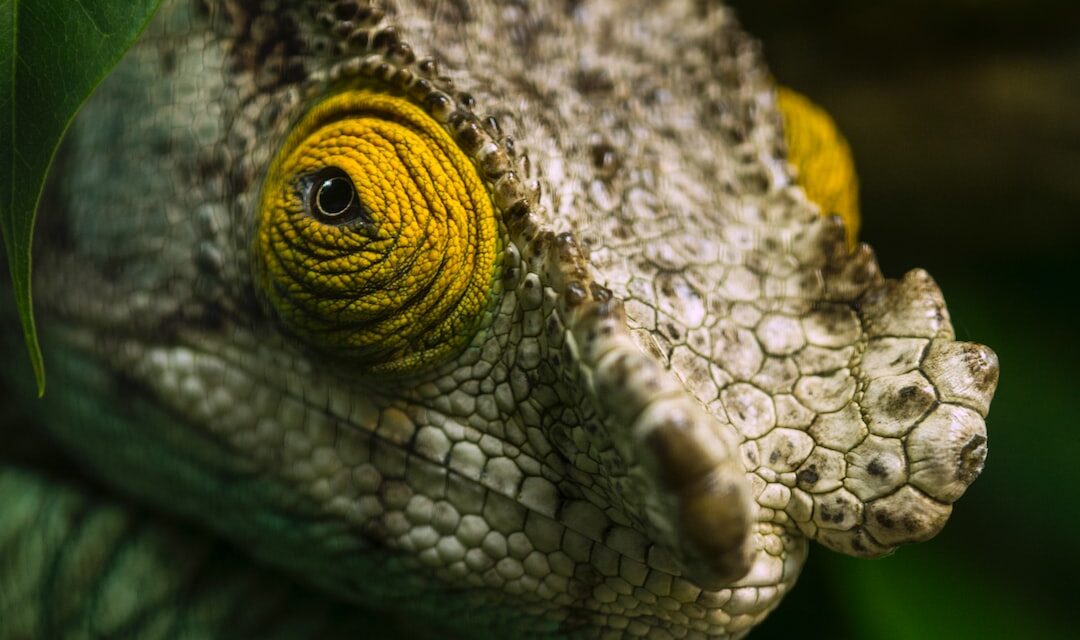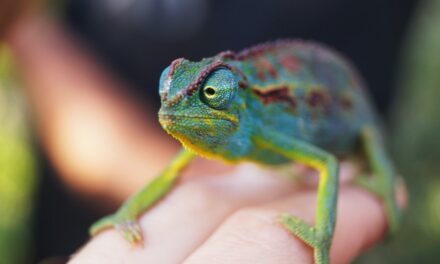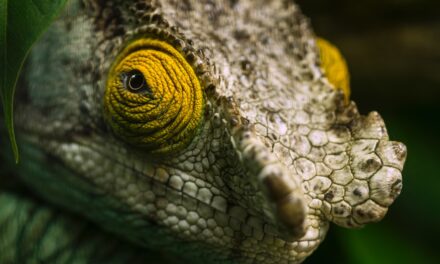Chameleons have long been a popular choice for reptile enthusiasts and pet owners alike. These unique creatures have captivated people with their ability to change colors and their fascinating physical traits. The history of chameleons as pets dates back many years, with ancient civilizations such as the Egyptians and Greeks keeping them as exotic pets. Today, chameleons continue to be sought after for their beauty and intriguing behavior.
There are several reasons why chameleons are popular pets. Firstly, their unique physical traits and abilities make them stand out among other reptiles. Chameleons have the ability to change colors, which is not only visually stunning but also serves as a form of communication and camouflage. Additionally, their long tongues and independently moving eyes make them fascinating to observe.
The Pros of Owning a Chameleon: Unique Traits and Characteristics
One of the main advantages of owning a chameleon is their unique physical traits and characteristics. Chameleons are known for their ability to change colors, which is not only visually striking but also serves as a form of communication and camouflage. This ability allows them to blend into their surroundings and avoid predators.
Another pro of owning a chameleon is that they are quiet and low-maintenance pets. Unlike dogs or cats, chameleons do not require constant attention or interaction. They are content to spend most of their time in their enclosure, basking in the warmth of their heat lamp or hunting for insects. This makes them an ideal pet for individuals who may not have the time or energy to devote to a more demanding pet.
Furthermore, chameleons are fascinating to observe. Their slow movements and unique hunting techniques make them captivating to watch. From the way they use their long tongues to catch prey to the way they move their eyes independently, every aspect of a chameleon’s behavior is intriguing. This makes them a great pet for individuals who enjoy observing and learning about animal behavior.
Cons of Owning a Chameleon: High Maintenance and Special Care Requirements
While there are many pros to owning a chameleon, it is important to consider the cons as well. One of the main drawbacks of owning a chameleon is the high maintenance and special care requirements they have. Chameleons require specific environmental conditions in order to thrive, including the right temperature, humidity, and lighting. This means that owners must invest in the proper equipment and be diligent in maintaining these conditions.
Another con of owning a chameleon is the high initial cost and ongoing expenses. Chameleons can be quite expensive to purchase, especially if you are looking for a specific species or color morph. Additionally, they require a variety of supplies such as an enclosure, lighting, heating, and food. These costs can add up quickly and should be taken into consideration before deciding to get a chameleon.
Furthermore, chameleons are fragile and sensitive to stress. They can easily become stressed if their environment is not properly maintained or if they are handled too frequently. This can lead to health issues and even death in extreme cases. It is important for owners to understand the specific needs of chameleons and provide them with a stress-free environment in order to ensure their well-being.
Choosing the Right Type of Chameleon: Species and Size Considerations
When it comes to choosing a chameleon as a pet, there are several factors to consider. One of the first decisions you will need to make is which species of chameleon you want to own. There are many different species available, each with its own unique characteristics and care requirements.
Some popular species of chameleons include the Veiled Chameleon, Panther Chameleon, and Jackson’s Chameleon. Each species has its own specific needs in terms of temperature, humidity, and diet. It is important to research the care requirements of each species before making a decision.
In addition to species considerations, you will also need to consider the size of the chameleon you want to own. Chameleons come in a range of sizes, from small species that grow to be around 6-8 inches long to larger species that can reach lengths of 18-24 inches. The size of the chameleon will determine the size of the enclosure you will need to provide and the amount of space they will require.
Setting Up the Perfect Chameleon Habitat: Enclosures, Lighting, and Temperature
Creating the perfect habitat for your chameleon is crucial to their health and well-being. Chameleons require specific environmental conditions in order to thrive, including the right enclosure, lighting, and temperature.
When it comes to enclosures, there are several options available. Some owners choose to use glass terrariums, while others prefer mesh cages. Both options have their pros and cons, so it is important to consider your specific needs and the needs of your chameleon when making a decision.
In terms of lighting, chameleons require both UVB and UVA light in order to properly metabolize calcium and maintain their overall health. UVB light should be provided through a fluorescent bulb or a mercury vapor bulb, while UVA light can be provided through a regular incandescent bulb.
Temperature is another important factor to consider when setting up a chameleon habitat. Chameleons require a basking spot with temperatures ranging from 85-95 degrees Fahrenheit during the day, as well as cooler areas for them to retreat to. It is important to provide a temperature gradient within the enclosure so that your chameleon can regulate its body temperature as needed.
Feeding Your Chameleon: Diet and Nutritional Needs
Feeding your chameleon a proper diet is essential to their health and well-being. Chameleons are insectivores, which means that their diet consists primarily of insects. It is important to provide a variety of insects to ensure that your chameleon is receiving all of the necessary nutrients.
Some common insects that can be fed to chameleons include crickets, mealworms, waxworms, and roaches. It is important to gut-load these insects before feeding them to your chameleon in order to provide them with additional nutrients. Gut-loading involves feeding the insects a nutritious diet for 24-48 hours before offering them to your chameleon.
In addition to a varied insect diet, chameleons also require supplementation with calcium and vitamin D3. Calcium is important for bone health and egg production in female chameleons, while vitamin D3 helps with calcium absorption. These supplements can be dusted onto the insects before feeding them to your chameleon.
It is also important to provide your chameleon with fresh water on a daily basis. Chameleons do not typically drink from a water dish, so it is important to mist their enclosure with water or provide a dripper system that mimics rainfall. This will ensure that your chameleon stays hydrated and healthy.
Handling and Bonding with Your Chameleon: Tips for Building Trust
Building trust with your chameleon is an important part of owning one as a pet. Chameleons are naturally shy and can become stressed if handled too frequently or improperly. It is important to take the time to build a bond with your chameleon and allow them to become comfortable in their environment before attempting to handle them.
When handling your chameleon, it is important to approach them slowly and gently. Avoid sudden movements or loud noises that could startle them. It is also important to support their body properly when picking them up, as they have delicate bones and can easily be injured.
Start by allowing your chameleon to climb onto your hand or arm on their own terms. This will help them feel more in control and less stressed. Once they are comfortable with being on your hand or arm, you can slowly start to move them around. It is important to pay attention to their body language and signs of stress, such as hissing or puffing up their body.
Building a bond with your chameleon takes time and patience. It is important to spend time with them on a regular basis, even if it is just sitting near their enclosure and talking to them. This will help them become familiar with your presence and associate you with positive experiences.
Health Concerns and Common Illnesses: How to Keep Your Chameleon Healthy
Like any pet, chameleons are susceptible to certain health concerns and illnesses. It is important for owners to be aware of these potential issues and take steps to keep their chameleon healthy.
One common health concern in chameleons is metabolic bone disease (MBD). This occurs when a chameleon does not receive enough calcium in its diet, leading to weak bones and deformities. MBD can be prevented by providing a proper diet that includes calcium supplementation.
Another common health issue in chameleons is respiratory infections. These can be caused by improper temperature or humidity levels in the enclosure, as well as poor ventilation. It is important to monitor these conditions closely and make adjustments as needed.
Other common health concerns in chameleons include parasites, such as mites or worms, and dehydration. Regular veterinary check-ups and proper hygiene practices can help prevent these issues from occurring.
If you notice any signs of illness in your chameleon, such as loss of appetite, lethargy, or changes in behavior, it is important to seek veterinary care immediately. Chameleons are known for hiding signs of illness, so it is important to be vigilant and proactive in their care.
The Cost of Owning a Chameleon: Budgeting for Supplies and Vet Care
Owning a chameleon can be quite expensive, both in terms of initial costs and ongoing expenses. It is important to budget for these costs before deciding to get a chameleon as a pet.
Some of the initial costs associated with owning a chameleon include the purchase of the chameleon itself, as well as the cost of an enclosure, lighting, heating, and other supplies. The price of a chameleon can vary depending on the species and color morph, but it is not uncommon to spend several hundred dollars.
In addition to the initial costs, there are also ongoing expenses to consider. Chameleons require a variety of supplies, such as food, supplements, and bedding, which can add up over time. It is important to budget for these expenses and ensure that you are able to provide for your chameleon’s needs.
Another important aspect of owning a chameleon is veterinary care. Regular check-ups and preventative care are essential to keeping your chameleon healthy. It is important to budget for these expenses and have a plan in place for veterinary care.
Is Owning a Chameleon Right for You?
In conclusion, owning a chameleon can be a rewarding experience for those who are willing to put in the time and effort to meet their specific needs. Chameleons are unique pets with fascinating physical traits and behaviors that make them stand out among other reptiles.
However, it is important to consider the pros and cons of owning a chameleon before making a decision. Chameleons require high maintenance and special care requirements, which can be costly and time-consuming. They also have specific environmental needs that must be met in order for them to thrive.
If you are willing to invest the time, money, and effort into providing the proper care for a chameleon, they can make wonderful pets. However, if you are not able to meet their specific needs or are looking for a more low-maintenance pet, a chameleon may not be the right choice for you.
Overall, owning a chameleon can be a rewarding and educational experience for those who are passionate about reptiles and willing to provide the necessary care. With the right knowledge and commitment, chameleons can make fascinating and beautiful pets.










Recent Comments